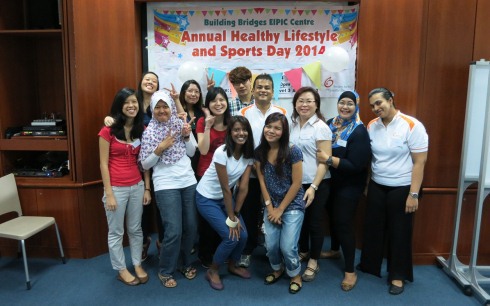By 2030, it is estimated that two out of 10 people in Singapore will be above 65. It is no surprise then that safety of the elderly at home would be a major concern for many as a serious fall could lead to irrevocable effects on their health and affect their quality of life.
%2014032014.jpg)
Here are tips offered by our therapists Nurul Atiqah, Alan Ong and Selvaraj Senthilkumar, on how falls can be prevented and what can be done to make homes elderly friendly.
Home modification
One of the ways to prevent falls at home would be through home modification. Home modification is the conversion or adaptation of the indoor environment to make performing tasks easier and safer. This will reduce accidents and support independent living. Here are some of the ways to modify specific areas in our homes to make them safer:
Living Room
- Run wires along walls or tape them down onto the floor so that people won’t trip over them
- Ensure that the area is well lit
- Keep things in their rightful place and avoid clutter
- Avoid low seats
- Use cordless phones to prevent falls caused by having to rush to pick up the phone when it rings. Such phones are easily portable and eliminate the risk of tripping over wires.
Bedroom
- Place lamp switches within reach from the bed
- Choose a bed of the right height, ie not too low or high
- Place walking aids close to the bed
- Have available a commode or urinal bottle
- Install a night light
Toilet
- Use non-slip mats or tiles
- Install grab bars near toilet bowls and the shower
- Have a sitting toilet bowl
- Install folding doors so there is more space to move around
- Ensure that the floor is dry at all times
- Have available a shower chair
- Switches should have glow-in-the-dark stickers
Kitchen
- Place items within reach and not at high places
- Do NOT stand on stools to reach high places
- Clean up spillage as soon as possible
In General
Stick reflective tape on kerbs and edges of steps
Ensure good lighting all around and well-lit stairs
Use slip-resistant backings for floor mats
Remove all clutter, socks and slippers
Factors that increase the risks of falls
1. Socio-demographic – Increase in age, history of falls, living alone, and female
2. Position – Reduced balance when standing, bending over or reaching forward, from sitting to standing or when shifting between places
3. Impaired functions – Poor hearing or eyesight, giddiness, dizziness and reduced sensation, strength or poor reflexes
4. Psychological – Increased fear of falls, risk-taking behaviour
5. Medical – Parkinson’s Disease, diabetes, dementia, stroke
6. Medication – Side effects of medicines
7. Environment – Dim lighting, trailing wires, clutter, slippery or wet floors, loose rugs, improper furniture height, small kids, pets
8. Personal – Lack of exercise, effects of alcohol, ill-fitting clothes, and poor nutrition
Facts and figures
Accidental falls are the most common, accounting for 25 per cent to 40 per cent of all falls. They are usually caused by environmental hazards at home, which makes a person staying indoors more prone to falls as compared to outdoors. Falls occur mainly at these areas:
- Living room
- Bedroom
- Toilet
Approximately 10% of all falls result in serious injuries such as fractures, and medical costs incurred can be hefty. The cost of a hip replacement surgery is anything from $6,000 to $9,000 (for wards B & C). Other consequences of falls include: - Dislocations
- Fear of falls
- Loss of confidence to do things independently
- Increased risk of repeated falls
- Activity limitation
- Head injuries
- Blood clots
- Serious cuts
- Death
Ageing brings along with it certain risk factors that may not be preventable. However, accidental falls which are usually caused by environmental hazards at home can be prevented.
Contact your occupational therapist for more information on assessing and modifying your home to mitigate such risks. A physiotherapist will also be able to address issues relating to the risk





